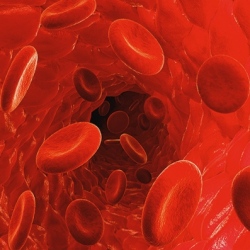
A new probe that sticks to blood clots so they can be seen in a PET scan has proved successful in rats, and will be tested in humans later this year, according to researchers in the US. They say the technique can scan the entire body and pinpoint the location of large and small blood clots.
This would offer an advantage over present methods, which concentrate on individual parts of the body. In the rat study, blood clots "lit up" brightly in a whole-body PET scan. Speaking at a meeting of the American Chemical Society in Boston, the scientists said that if human trials were similarly successful, the technique could be available within a few years.
Peter Caravan, a research chemist at Massachusetts General Hospital, said that in many cases, the blood clots that caused strokes and heart attacks were actually small pieces broken off from a larger clot, somewhere else in the body.
"For instance, a piece of blood clot breaks off in the aorta, which is a big vessel, goes into the brain, into smaller vessels, and causes a stroke. "So clinicians want to know, where is the culprit lesion [in the brain]… and also where’s the source thrombus? Does it remain? Because if it remains, there’s a high probability of another event," Dr Caravan told the BBC.
"Our idea is that from a single injection, the probe will travel through the body and find blood clots anywhere." He and his colleagues made and tested 15 different probes before they found one that worked really well. It consists of a small peptide molecule that binds to the clot protein fibrin, coupled to a radioactive "label" that can be detected in the scanner.
The results in rats, published this week, were particularly promising because of how clearly the blood clots stood out.
